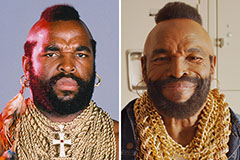From the rugged peaks upon the Highlands to the bustling cities down south, the kilt stands as a symbol showing Scottish identity. This distinctive outfit has existed for centuries, woven with threads of tradition. Each tartan pattern tells a narrative, unique to family.
The kilt's origins are shrouded in mystery. Some say it evolved from the Celtic tunic, while different accounts suggest its roots lie deeper, extending back to ancient warrior garb. Regardless of its exact genesis, the kilt has grown a cherished part regarding Scottish culture.
On special occasions, men don their kilts with pride, joined by sporrans and glengarries. The sight is a moving reminder of the rich heritage where Scotland holds.
Yet, the kilt is more than just a piece showing clothing. It symbolizes freedom, strength, and custom. It's a symbol where unites Scots around the world.
Exploring Tartan's Rich History and Meaning
Tartan, with its iconic crisscrossed pattern, has an ancestry spanning centuries. Originating in the Scottish Highlands, tartan was initially utilized as a way to separate different clans and families. Each clan possessed its own unique combination of colors and patterns, generating a symbolic representation of their identity. Over time, tartan evolved beyond its practical purpose to become a emblem of Scottish heritage and cultural pride.
Today, tartan persists popular globally. It is utilized in an array of apparel, from iconic kilts to modern skirts. The range of tartan designs, coupled with its rich history and cultural significance, makes it a captivating topic of exploration.
The Traditional Kilt: An Emblem of Scottish Heritage
For centuries, the kilt has stood as a venerable symbol of Scottish identity and heritage. Woven from vibrant designs, each kilt tells a story, a testament to the varied history and family ties that define Scotland. More than just an article of clothing, the kilt is a representation of Scottish culture, proudly worn on special occasions and celebrating its traditions.
The Enduring Legacy of Scottish Kilt
From the rugged highlands to bustling cities, the kilt stands as a emblem of Scottish identity. Woven from tartan fabrics get more info in a myriad of hues, each kilt tells a unique tale, paying tribute to clan history and heritage. The kilts' flowing lines embody the spirit of Scotland, its resilience and splendor. More than just an article of clothing, the kilt is a stirring reminder of Scottish pride and cultural depth.
- Its history spans centuries, with roots in both practice and practicality.
- Adorned by men of all ages, the kilt is a visible symbol of Scottish identity at events worldwide.
- Regardless of occasion, the kilt evokes a sense of connection to Scotland's past and present.
Grasping the Art of Kilting
Kilting is a deeply woven tradition preserved through generations. It's more than just stunning fabric; it's a narrative of heritage. The talented hands which craft these kilts infuse the soul of Scotland. From rich hues to intricate patterns, each element holds meaning. Should you be a observer or a wearer, the art of kilting offers a fascinating glimpse into the heart of Scottish culture.
From Battlefield to Ballroom: The Evolution of the Kilt
The kilt, a garment imbued laden a rich history spanning centuries, has undergone a fascinating transformation across battlefield towards ballroom. Its roots lie in the practical needs of Scottish warriors, where its sturdy construction and ease of movement proved invaluable in combat. Over time, the kilt evolved, shedding its purely military function to become a symbol of cultural identity and national pride. The current kilt, often decorated with intricate patterns and tartans displaying various clans and families, has become a timeless attire worn on both formal occasions and everyday settings.
Its enduring appeal lies in its unique blend of history, tradition, and style, making it an iconic symbol of Scottish heritage that continues to captivate audiences worldwide.
 Mr. T Then & Now!
Mr. T Then & Now! Lark Voorhies Then & Now!
Lark Voorhies Then & Now! Shane West Then & Now!
Shane West Then & Now! Nancy Kerrigan Then & Now!
Nancy Kerrigan Then & Now! Justine Bateman Then & Now!
Justine Bateman Then & Now!